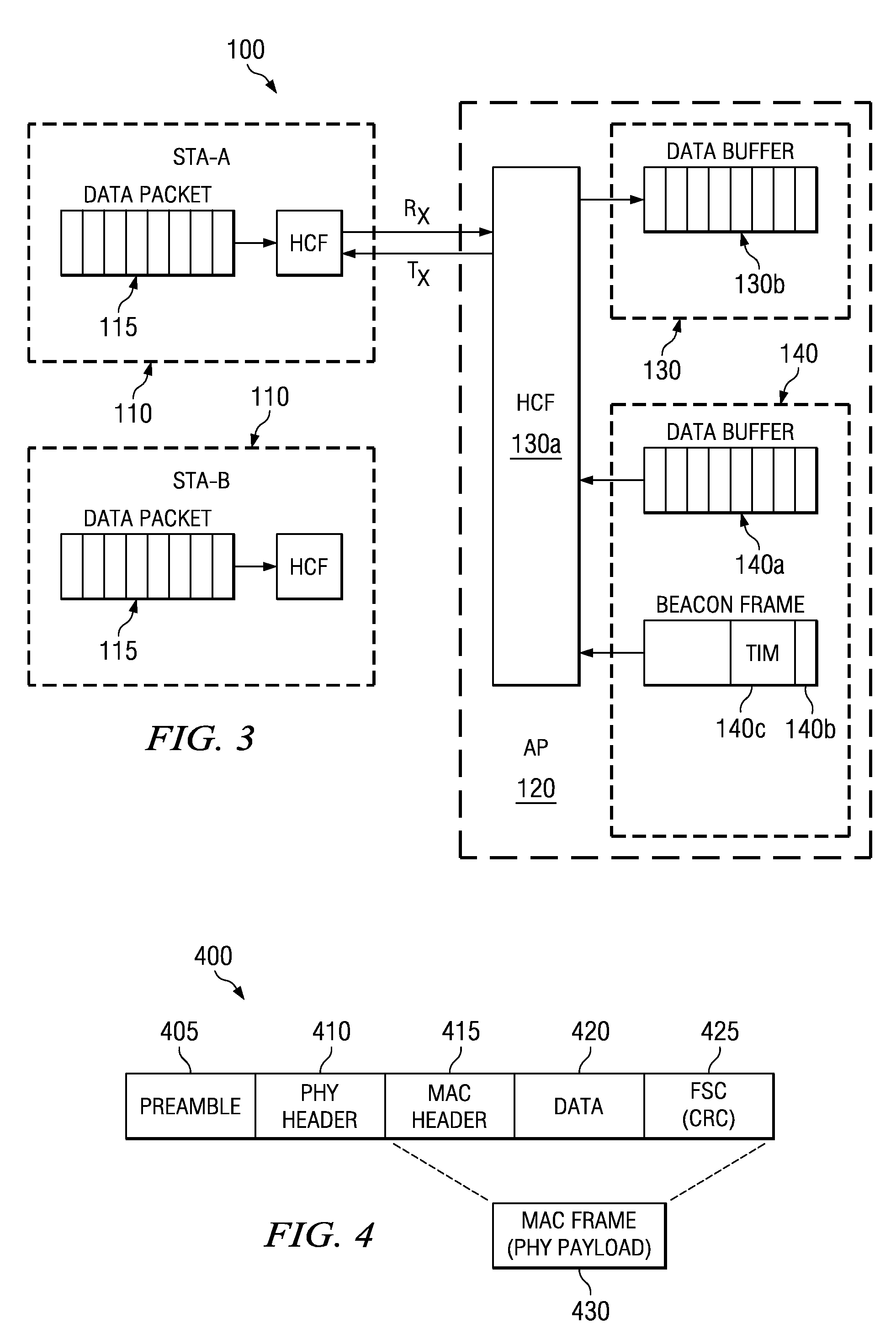Power saving via physical layer address filtering in WLANs
a physical layer address filtering and power saving technology, applied in data switching networks, high-level techniques, instruments, etc., can solve the problems of the inability to monitor the performance of the mac layer, so as to achieve the effect of reducing the amount of power consumption and unnecessary processing of the mac layer
- Summary
- Abstract
- Description
- Claims
- Application Information
AI Technical Summary
Benefits of technology
Problems solved by technology
Method used
Image
Examples
Embodiment Construction
[0046]The present invention will now be described with reference to the attached drawings, wherein like reference numerals are used to refer to like elements throughout. The invention relates to a PHY layer address filtering protocol as a power savings mechanism in a wireless network in which a subset of the destination MAC address is represented as a partial address having several bits utilized in association with a portion of the PHY header (the PLCP header) at the PHY layer.
[0047]Current wireless LANs based on IEEE 802.11 employ a broadcast based access mechanism. In other words, a station will have to receive all the frames on the wireless channel and decode the MAC header to see if a frame is addressed to itself. Therefore, a significant amount of power may be consumed decoding irrelevant data intended for other stations. It is the intent of this invention to present a method for performing physical layer frame filtering. Such a method has the following merits on power saving.
[...
PUM
 Login to View More
Login to View More Abstract
Description
Claims
Application Information
 Login to View More
Login to View More - R&D
- Intellectual Property
- Life Sciences
- Materials
- Tech Scout
- Unparalleled Data Quality
- Higher Quality Content
- 60% Fewer Hallucinations
Browse by: Latest US Patents, China's latest patents, Technical Efficacy Thesaurus, Application Domain, Technology Topic, Popular Technical Reports.
© 2025 PatSnap. All rights reserved.Legal|Privacy policy|Modern Slavery Act Transparency Statement|Sitemap|About US| Contact US: help@patsnap.com



